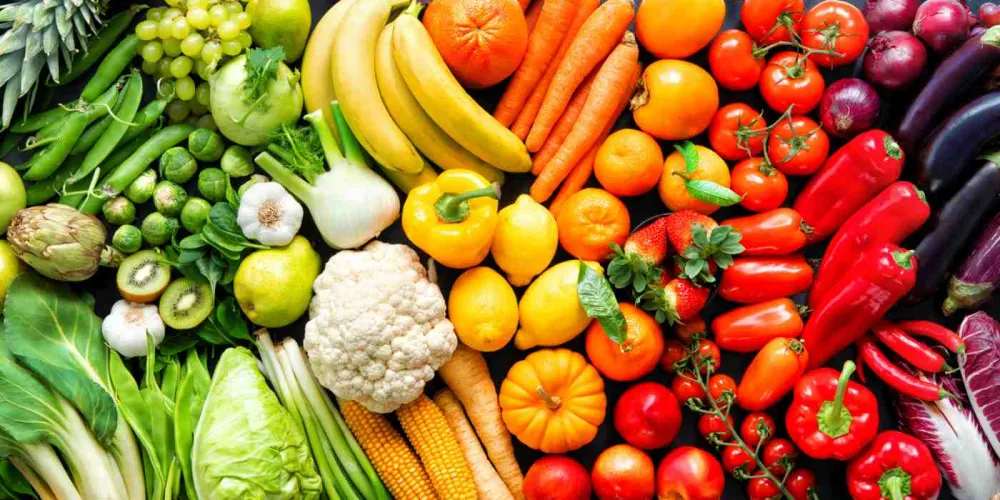New tools help map food environments in India, offering hope Against “Hidden Hunger”

The George Institute for Global Health India has collaborated with international partners to develop a set of practical tools to help researchers and policymakers better understand how people in India and other low- and middle-income countries (LMICs) access food from diverse food environment that eventually contributes to the nutritional status of the population.
Published in Current Developments in Nutrition, the study features contributions from Dr Suparna Ghosh-Jerath from The George Institute for Global Health India in a study led by Dr Shauna Downs at Rutgers School of Public Health. This study offers key insights into how food environments influence diets and nutrition, guiding efforts to combat malnutrition.
India, like many LMICs, is witnessing rapid and complex changes in its food environment—the interface through which people access food, whether from markets, natural surroundings, or social networks. Over the last few decades, traditional diets and food systems have shifted towards a greater reliance on markets and supermarkets. However, this change has not necessarily translated into better nutrition. On the contrary, the country continues to face the burden of both undernutrition and rising diet-related diseases.
Nutrient deficiencies remain widespread in India, this not only includes deficiency of macronutrients like energy and protein but also, micronutrient deficiency- referred to as “hidden hunger” which results from lack of essential micronutrients such as iron, vitamin A, iodine, zinc among others. National surveys such as NFHS-5 (National Family Health Survey) have revealed alarmingly high levels of anaemia, especially among women and children—conditions largely linked to poor diet quality. Compounding the issue, India’s soils are increasingly depleted of organic content, resulting in lower nutrient density in food. This is further exacerbated by staple-heavy supplementary feeding programs which are focused on rice and wheat and lack the variety and nutrient richness needed for long-term health.
The new study responds to the growing recognition that tools developed in high-income countries fail to reflect the realities of LMIC food environments, which are far more diverse, informal, and dynamic.
Through a comprehensive, iterative process, we developed and refined a ‘Food Environment Toolbox’ tailored for low- and middle-income countries. We piloted it in rural, peri-urban, and urban settings in India and Cambodia, and it includes seven practical tools—like participatory mapping, seasonal food availability calendars, market mapping, and assessments of diet cost and vendor practices.
By:Dr Suparna Ghosh-Jerath
Program Head, Nutrition, The George Institute for Global Health
The tools developed were easy to implement and generally well-received in the field. With a few exceptions—like the seasonal food availability calendar working better in rural areas, or vendor assessments being less relevant for formal supermarkets—they proved adaptable and effective across different settings.
By:Dr. Shauna Downs
Associate Professor, Department of Health Behavior, Society and Policy, Rutgers School of Public Health
This toolkit comes at an important time for India, which is facing a double burden of malnutrition—undernutrition in many people, and a rise in diseases like diabetes, high blood pressure, and heart problems. Poor diets are critical risk factors for both. Experts are now calling for more practical and holistic nutrition policies that are double duty, meaning they address the dual burden of undernutrition and diet related non -communicable diseases and informed by customised context specific dietary practices.
The Food Environment Toolbox also has strong implications for India’s major public health and nutrition programmes. Initiatives such as the POSHAN Abhiyaan and the supplementary nutrition component under the Integrated Child Development Services (ICDS), the Mid-Day Meal Scheme and the public distribution system in India could benefit from a shift in focus—from calorie sufficiency to ensuring nutrient adequacy while contextualizing these government food programs to the diverse food environments where they are delivered thereby optimising their uptake and supply chain. By providing concrete data on food access, availability, affordability, and quality, the toolbox empowers planners and policymakers to design better-targeted, evidence-based interventions that reflect the lived realities of people’s food environments.
As India works towards achieving its nutrition and health goals, these new tools offer a timely and much-needed way to measure progress, identify gaps, and reimagine solutions for a healthier future.
Stay connected and updated
Subscribe to our mailing list for the latest news, events, and updates in health research.
